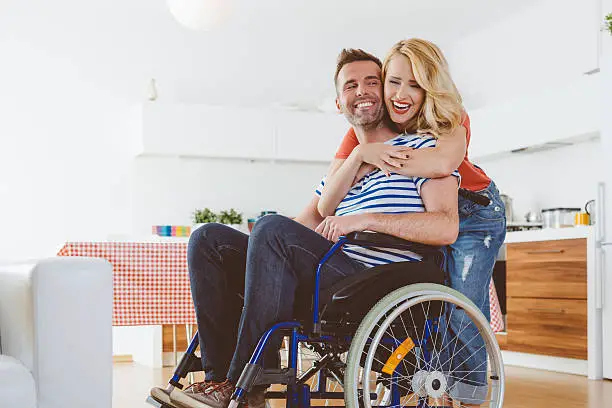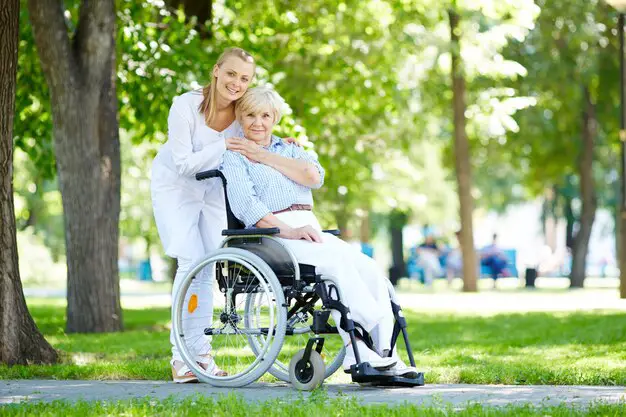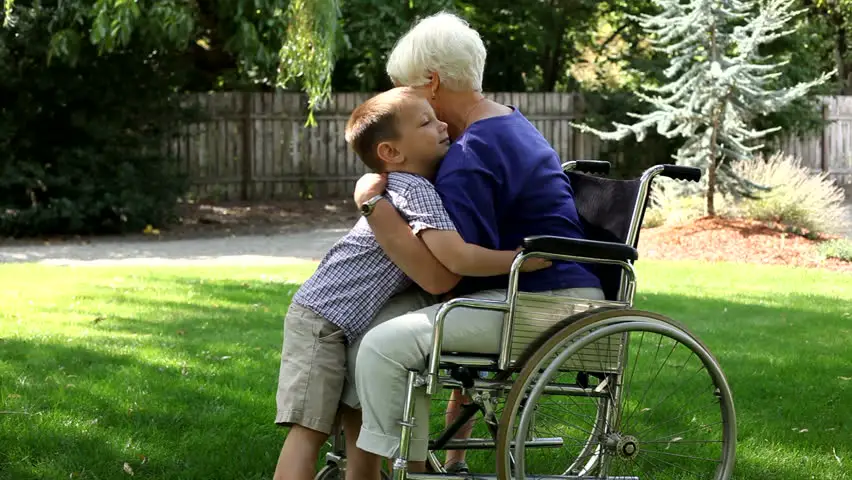There are few physical gestures as universally comforting as hugs.
A hug can signify greetings, convey amorous sentiments, offer emotional reassurance, or give security and support.
Described as ‘the heart’s handshakes’, hugs relieve pain and stress, strengthen interpersonal bonds and relationships, and reduce nervousness and fright.
When faced with the need to hug people in wheelchairs, however, some persons might get a bit confused as to how to go about it.
Table of Contents
- Why Hug People in Wheelchairs?
- Factors to Consider when Hugging Persons in Wheelchairs
- 3 Ways to Hug Someone in a Wheelchair
Why Hug People in Wheelchairs?
Humans, disabled or not, are generally designed to crave physical connections with their fellow humans.
Studies have shown that babies denied the human touch may have psychological and social issues as they develop.
Disabled people need physical connections with others in different modes, ranging from handshakes to sex. For persons in wheelchairs, hugs are important for many reasons, some of which may include the following.
Related: How to Have Sex in a Wheelchair with Your Spouse
(I) Hugs can help fight loneliness
Disabled persons are much more at risk of becoming sad and socially separated.
They get strong feelings of disconnection from their environment, which is often dominated by non-disabled people. Being a disabled person makes it a lot more difficult to establish friendships and build social connections with other people for reasons ranging from difficulties in physical mobility to cultural stigmas against disabled people in certain localities.
Physical embraces can help reassure disabled people that you care and that they are not abandoned. Hugs help increase their self-regard and make them feel desirable, secure and loved.
(II) Hugs heal
It is hard to overstate the therapeutic qualities of hugs. Hugs help the secretion of certain hormones into the body system. Among these hormones are serotonin, dopamine, and oxytocin, which are known to improve moods and help people feel more relaxed, happier, and generally more positive.
Hugs also lead the thymus gland to better control the body’s production of white blood cells, which help to protect the body from certain diseases. Furthermore, hugs relieve pain, stress, and aid in medical rehabilitation.
Factors to Consider when Hugging Persons in Wheelchairs

(I) Level of mobility
Wheelchair-bound persons who can move the upper parts of their bodies often stretch their arms towards you if they want a hug. If they don’t do this, it’s possible that they don’t want an embrace.
(II) Wheelchair peculiarities
It’s important to avoid making physical contact with any part of a disabled person’s wheelchair designed for triggering movement to avoid sending them on an unexpected ride. Also, the design of some wheelchairs renders them less suitable for hugs than others. Be sure to take this into consideration.
Carefully manage the movement of your body to adapt to the wheelchair’s design to minimize discomfort to the recipient of the hug.
(III) Level of the recipient’s openness to hugs
It would be quite ironic if a hug causes pain and suffering to a disabled person, as they are intended to bring relief and comfort.
It’s crucial to be sure that the timing, style, and duration of your hug do not put the recipient at risk of discomfort. While some people are big fans of physical contact, some are not.
Consider doing the following to avoid getting them uncomfortable.
Related: How to Dance With Someone in a Wheelchair
Consider their level of familiarity with you
People generally feel more comfortable engaging in hugs with close friends and family members than with casual acquaintances or total strangers.
Your level of closeness with the disabled person should determine the physical proximity of your body in the course of the hug, as well as its duration. While intimate friends may want tighter, long-lasting hugs, mere acquaintances may be offended by this.
Ask them directly if they would mind a hug
Do this politely and without patronizing them. This gives them the freedom to choose and saves you the trouble of having to guess whether they want a hug or not.
Study their mood and body language for clues
If they lean forward towards you, stretching their arms in your direction, you can probably safely assume they are interested in a hug. If they show signs of pain or discomfort either before or in the course of the hug, it is better to stop.
Furthermore, people generally tend to be more receptive to hugs when they are happy than when angry.
3 Ways to Hug Someone in a Wheelchair

There are many methods one can adopt to embrace persons in wheelchairs. It’s important to take your level of familiarity with them into consideration in selecting a style. You can use the following steps.
Related: 7 Fun Places to Go on Crutches
(I) Frontal hugs
This method is suitable for people with all manner of relationships with you, ranging from lovers to casual colleagues or neighbors.
- Position yourself directly in front of the person’s wheelchair
- Smile, make verbal greetings, or carry out other actions to make the hug recipient aware of and comfortable with your presence
- Bend over or lean towards the recipient
- Encircle the person’s upper body with both hands. Depending on your level of personal closeness with the recipient, you may either maintain a slight difference between your torsos or go in for fuller contact. You may also make a slight body squeeze
- You may pat the recipient lightly either on the shoulders or in the back, depending on your relationship with them
(II) From the sides
For this hug, your bodies may either twist to the sides in each other’s direction or face directly forward with only your arms linking your bodies. Your foreheads or the sides of your head may also meet as a gesture of endearment. This method is suitable for a quick, friendly salutation.
- Sit down beside your intended recipient
- After confirming their consent, you can hug them with whichever one of your arms that is located nearest to them. Depending on the recipient’s level of mobility and the relationship between you, they may reciprocate by encircling your neck or shoulders with their arm closest to you
- You may lightly squeeze or pat the recipient’s shoulders
(III) Embracing from behind
As this method involves embracing people from outside their scope of vision, the recipient’s consent and awareness should be your key considerations. This method should be used for persons with whom you enjoy close relationships, such as lovers and family members.
Always be sure to alert the recipient of your presence and possibly ask for their consent before hugging them in this manner to avoid startling them or causing them discomfort.
- Approach the intended recipient’s wheelchair from the back
- When standing behind the wheelchair, encircle your arms while bending over around the recipient’s upper body. The recipient can reciprocate by patting your arms or hands




